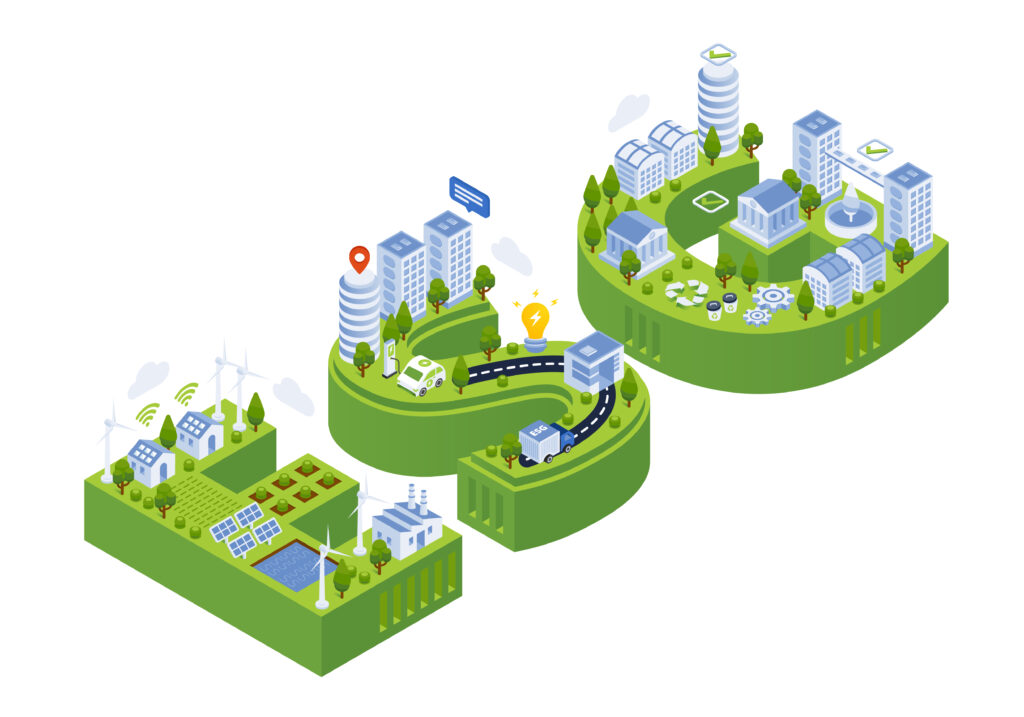ESG - Looking Backwards, Living Forwards
by David Jackson – Creative Consultant

ESG or Environmental, Social, Governance; it’s a hot topic about an even hotter planet. But the good intentions that lay beneath the trending acronym are far from new.
Lessons From the Past
It’s intriguing to recognise that our understanding of time and ‘progress’ is often skewed when it comes to historical perspectives. While conventional accounts frequently trace the development of ESG principles to the industrial revolution and subsequent advancements, an equally valuable vantage point emerges when we shift our gaze back some 60,000 years to the world’s oldest living culture.
Aboriginal and Torres Strait Islander people have a deep understanding of purpose and responsibility when caring for the land and environment. First Nations people have always seen themselves as custodians, not owners, with a sacred duty to safeguard the environment for future generations. Their wisdom – past and present – emphasises sustainable practices and fosters a deep connection between humanity and nature.
We can also see societal considerations when looking at medieval Europe (roughly 500 – 1500AD). In that period, the interplay between religion, law and communal welfare wove together the fabric of decision making and societal well-being. Religion was a key driver of social norms by the enforcement of guiding principles. This influence can be seen in pre-industrial revolution corporations such as mining and merchant guilds. Medieval organisations were often incorporated, with the caveat that such organisations must benefit their communities. It’s a common misconception that modern-day services such as social security and health insurance were a product of the industrial revolution patriarchs, where in fact, these modern-day social safety nets reach as far back as the Middle Ages.
Historical examples of how particular societies operated can give us perspective, but it is important to note that historical and cultural examples are not void of hypocrisy. They are products of their time with their own social and environmental atrocities that should be recognised and learned from. What these examples do give us, however, is an understanding that, inherently, society will always push for purpose as well as profit.
“Life can only be understood backwards; but it must be lived forwards.” Soren Kierkegaard
The Evolution of ESG in Business
With the arrival of the industrial revolution, an emphasis on the social dimension of organisations found itself somewhat eclipsed by the prevailing capitalist drive for amassing financial value above all else. Of course, the pursuit of this ideology was short lived with the rise of the union movement, where issues like job security, safety and fair pay for work took their moment in the spotlight.
When looking at the trajectory of the term ESG in business, we can trace its roots to early forms of Corporate Social Responsibility (CSR), where the focus on philanthropy and charitable donations was evident in the likes of the Rockefeller Foundation. In the 1960-80s, we saw a movement of Socially Responsible Investing (SRI), Ethical Investing (EI) and Sustainable Investing (SI). In the 90’s we saw the introduction of the triple bottom line (TBL) and corporate citizenship (CC); clearly it was no longer just an aspiration for businesses to operate as responsible members of society, it was a reality.
At the turn of the 21st Century, we saw the rise of the ‘E’. Environment gained prominence due to escalating climate change awareness and environmental concerns. The UN’s involvement intensified in 2006 with the launch of the Principles for Responsible Investment (UNN PRI), establishing a global framework for integrating ESG factors into financial decisions. As non-financial reporting pressures intensified, ESG transcended from being merely an investment strategy, to becoming a necessity for businesses seeking a social license to operate.
Throughout this time, it became evident that businesses could no longer offset their social and environmental impact through large donations, but rather, they needed to self-reflect and self-actualise to make real change.
Purpose v Profit
When we strip it back, ESG means that businesses must operate in ways that are socially and ethically sound and environmentally sustainable. But, while on paper this is straightforward, the intentions behind its execution are more complex.
Over the past 30 years, it has become clear that the motivation for implementing ESG into corporate strategy can go one of two ways. Certain organisations see it as a threat to their bottom line, as the change in consumer sentiment and consumer demand for more sustainable products and services grows ever louder. On the other hand, other organisations are leaning into the change, exploring both risks and opportunities for driving towards a more sustainable future.
The complexity here lies in the dual nature of motivations inherent in the ESG movement. From a consumer standpoint, it highlights a growing recognition of the urgent need to preserve our planet and promote social welfare. From a business standpoint, having a social license to operate has become a necessity for maintaining viability, driven by the protection of reputation, attracting of stakeholders, and the securing long-term prosperity.
This duality creates a nuanced philosophical discussion for leaders, regarding the key drivers and the motivation for ESG implementation. If consumer demand and government legislation are the core catalysts to drive organisational change, prosperity will be short lived. As organisations move further into the 21st century, self-motivation, and self-actualisation must be key drivers for embedding ESG strategy into their structural and strategic fabric.
Clearly, ESG as a business concept is here to stay, whether the current acronym remains or reiterates doesn’t matter. What really matters is what we do with these considerations, as what we do moving forward will determine the fate of not only our organisations but the planet on which we operate. As we continue to look both backwards and forwards, we must learn from history, acknowledge the complexities of the present, and most importantly when envisioning the future, accept that societal welfare, environmental protection and corporate interests are not mutually exclusive.
They never have been, and never will.